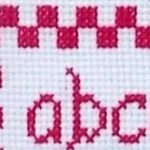The music staff is the foundation for most of the Western world’s music notation. It is a series of five horizontal lines, on and between which music notes are written, their locations (along with a clef) indicating their pitches.
However, the staff did not always exist. Its origin is a story of false starts and gradual development.
Records of that history center on the notation of Christian vocal music.
Ecphonetic Notation
The ancient Greeks had several different systems of music notation, all derived from the letters of their alphabet.
In the early Christian era, music was transmitted orally, and notation consisted only of a limited number of conventional signs added to the text of a Latin plainsong (monophonic chant) to clarify sentence structure, much like modern punctuation marks, and to show accents on individual syllables. Musicologists now refer to that system as ecphonetic notation.
The accent marks in that system derived from basic signs formerly used to indicate a change of pitch of the voice in ancient Greek recitation, referred to in the Middle Ages by their Latin names: the accentus acutus (´) for a rising inflection, the accentus gravis (`) for a falling inflection, and the accentus circumflexus (ˆ) for a rise followed by a fall.
(These accent marks are still used in some modern languages, such as French. Their English names are acute accent, grave accent, and circumflex respectively.)
Neumes
The accent marks evolved into a new notation system, beginning about the 8th century and continuing to develop for the next several centuries, that indicated melodic lines separately from the text. This system involved not only the original straight lines of the accent marks but also an intricate catalog of curved lines, dots, squares, and other signs called neumes.
Middle English speakers adopted the word neume from Middle French in the 14th century. The French form came from Medieval Latin neuma and pneuma (“neume”), based on Greek pneuma (“breath”).
The reason for the name is that medieval music theorists first applied it to a prolonged phrase, or group of notes, sung to a final syllable, especially at the end of a melody. Because of the long breath necessary for singing such a phrase, theorists called the phrase by the Greek name pneuma (“breath”), later shortened to neuma. Eventually, the constitutent written symbols of such a phrase were each called a neuma.
Neumatic notation consisted of signs for single notes and for groups of two or more notes. However, neumes provided only a general up-and-down outline of melodic motion, not specific music intervals. For example, a two-note neume could indicate that the second note was higher than the first, but not how much higher-a major second, a minor third, a perfect fourth, or some other specific interval.
Tentative efforts toward indicating intervals more clearly came during the 10th and 11th centuries with the use of heighted, or diastematic, neumes. Scribes in certain areas, especially Italy, wrote such neumes at varying heights above the text to indicate the intervallic course of the melody more precisely.
However, the neumatic system of notation was inherently designed as a mnemonic aid for singers who already knew the melodies by heart and simply wanted reminders during performance.
What was needed was a method of indicating the exact pitch of each note, at least in relation to preceding and succeeding notes. That method was finally achieved by the music staff.
False Start
The anonymous author of a ninth-century music treatise called Musica Enchiriadis (Handbook of Music) abandoned the neumatic system and filled the book with music examples indicated on a six-line staff.
At the left margin of the page, the spaces between the lines were labeled as whole steps (marked T for Latin tonus) or half steps (marked S for semitonium). The author placed the syllables of the texts in the spaces between the lines. The positions of the successive syllables indicated the exact relative pitches of the melody.
The result, with respect to pitch indication, was remarkably close to modern staff notation. Unfortunately, musicians and theorists of the time did not adopt the staff system of the Musica Enchiriadis.
Plainsong Staff
The first enduring staff system arose in the 10th century when an unknown scribe drew a single horizontal line above the words of a plainsong text. The line represented the pitch of F below what is now known as middle C. Neumes were written on, below, or above this line, giving a much more accurate (though still not perfect) indication of their pitch relationships than was previously possible.
The pitch of F for this line was undoubtedly chosen because it was a comfortable midpoint in the vocal ranges of most tenor and bass singers (only male voices were allowed to sing liturgical chants in their early history). Later the Latin letter F was actually written in the left margin as a preface to the line, which was usually colored red.
Soon a second horizontal line, colored either green or yellow, was drawn above the existing line. The new line represented the pitch of C (modern middle C) and was prefaced by the letter C.
In the modal scales in use during the medieval period, both F and C have natural half-step melodic intervals below them (E below F, and B below C). Therefore, one reason for the choice of F and C for the original two staff lines may have been to draw attention to the half-step intervals.
Soon a third line, colored black, was drawn midway between the F and C lines. The new line represented the pitch of A.
The result was a three-line staff, each pair of lines representing the interval of a third.
By the 11th century, a fourth line, also colored black, had been added. Again the line indicated the interval of a third, but sometimes the new line was placed above the C line (making the new line E) and sometimes the new line was placed below the F line (making the new line D), depending on whether the plainsong melody was high or low.
Systematizing the Roman Catholic liturgical chants into three-line or four-line staff notation is often credited to an 11th-century monk-scholar, Guido d’Arezzo.
Four lines became the norm, and since the 14th century, all four lines have nearly always been drawn in red. More than four staff lines were unnecessary because the plainsong melodies rarely exceeded an octave in range and therefore could easily be written on four lines and three spaces.
While the plainsong staff was going through this evolution, the note system itself remained neumatic. The neumes were placed in relation to the staff lines and spaces just as modern notes are today. Officially preserved Roman Catholic chants are still written in neumes on a four-line staff.
Modern Staff
As Western music developed beyond simple chants, the range of music increased and so did the size of the staff. A five-line staff was used as early as the 13th century. Instrumental music, in some periods and places, was notated on a staff varying from six to as many as fifteen lines.
Eventually, the five-line staff became the norm for all kinds of music. More than five lines are hard to read.
While the modern staff was stabilizing so was the modern note system, which, after going through intermediate forms, replaced the neumatic system. The modern staff and note system was basically finalized during the 16th and 17th centuries.
The exact pitches on a modern staff are indicated by a sign called a clef. There are three such signs.
The F clef is a stylized symbol that evolved from the original medieval letter F. It is placed on the fourth line of the five-line staff. Like its ancestor, this clef marks the pitch of F below middle C, and because, like its ancestor, it represents lower-register (men’s) voices, it is also called the bass clef.
The C clef is any one of several stylized symbols that evolved from the original medieval letter C. It is placed on either the third line, where it is called the alto clef, or the fourth line, where it is called the tenor clef, of the five-line staff. Like its ancestor, it represents middle C and may be said to have a middle-register position.
The G clef is a stylized symbol that evolved from the letter G, which prefaced and labeled one of the added horizontal lines in the early staff system, specifically, the one a third above the E line previously mentioned. The G clef is placed on the second line of the five-line staff. Because of its relatively high position, the G clef is also called the treble clef.
The lines and spaces of a staff represent the pitches of the diatonic scale (that is, the white keys of the piano). Chromatic pitches (played on the black keys) are indicated by the use of symbols called sharps and flats.
Small lines that indicate pitches above or below a given staff are called ledger lines.
Piano music is usually notated on two staves, commonly a treble staff and a bass staff, connected by a brace.
Several staves connected together to notate ensemble music form a score.
_________________________
Grout, Donald Jay, and Claude V. Palisca. A History of Western Music. 5th ed. New York: W.W. Norton, 1996.
The New Grove Dictionary of Music and Musicians. 2nd ed. London: Macmillan, 2001.
The Oxford English Dictionary. 2nd ed. Oxford, England: Clarendon Press, 1989.




